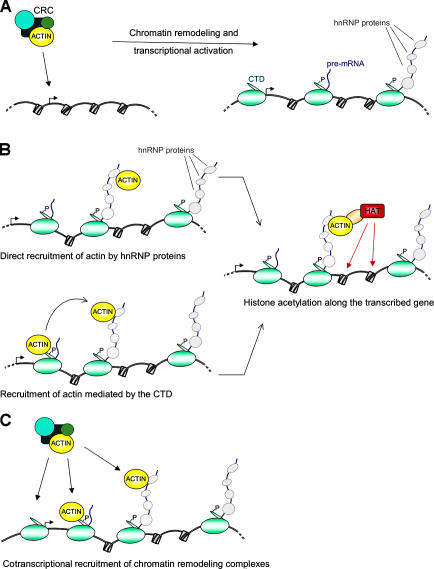Figure 1.
Models for the function of actin in chromatin regulation at class II genes. (A) Actin is a component of ATP-dependent chromatin remodeling complexes (CRCs) involved in transcriptional activation. (B) Actin becomes incorporated into the growing pre-mRNP while transcription is taking place. Actin may be recruited directly by hnRNP proteins. An alternative mechanism, supported by the observed binding of actin to the CTD, is that actin is recruited to the transcription machinery via binding to the CTD and subsequently transferred from pol-II to the nascent transcript. Adaptor proteins, such as HRP65-2 in C. tentans and hnRNP U in mammals (see the text for details), help actin recruit HATs that acetylate histones along the gene and maintain the chromatin template in a transcription-competent state. (C) We speculate that actin mediates the cotranscriptional recruitment of chromatin remodeling complexes to active genes through interactions with pol-II and/or with the nascent pre-mRNP.

